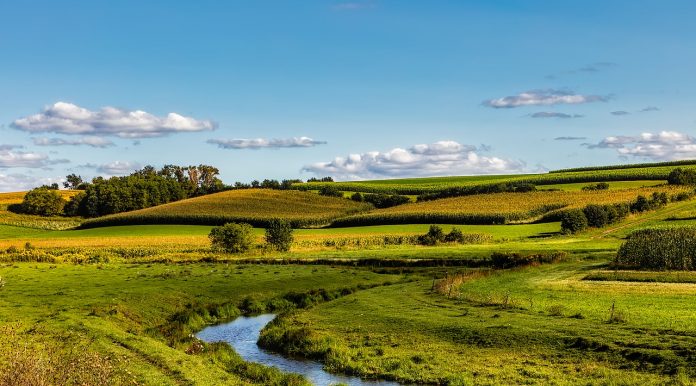A few times a year our office receives calls about a stream eroding a landowner’s property and they’ve lost significant portions of their streambank. This happens on rural and urban properties throughout the county.
Upon visiting the property, usually, the main culprit for the streambank erosion is that the property owner has mowed the grass up to the streambank. Mowing up to the streambank causes loss of the riparian area and bank instability, which then leads to bank failure.
In some cases, the property owner has dumped large rock or busted up concrete to help prevent further erosion.
By placing the rock or concrete along the bank, the stream channel can narrow which increases the speed of the stream. More times than not, this just makes the erosion worse causing more problems for the property owner and possible problems for downstream landowners as well.
Also, there can be large voids left in between the rocks or concrete pieces which the stream just erodes around causing more issues. Properly fixing the streambank, depending on how extensive the erosion, may require engineering plans, permits from OEPA and Army Corps of Engineers and a decent amount of money.
To go along with the streambank erosion, sometimes property owners dump their grass clippings along the streambank. This can impact the water quality of the stream.
Grass clippings contribute nutrients such as nitrogen and phosphorous when they decay, thereby causing uncontrolled and unwanted growth of algae and aquatic weeds in the waterways.
Phosphorous is considered the primary cause of water quality problems in our lakes, streams and ponds across the nation.
Too much algae growth blocks out the sunlight and prevents other plants from growing. When the algae dies and decays it’s harmful to fish as it takes away oxygen.
When you dump grass clippings or other yard waste along the streambank you’re also filling in any area that is used for a floodplain. Floodplains give streams spaces to spread out and slow down which lets sediment, nutrients and other pollutants a place to drop out. Floodplains also provide flood storage, groundwater recharge and valuable habitat.
Keep in mind that streams are dynamic and are always changing, which means your property may or may not ever be impacted.
There are some ways to reduce the risks. Make sure not to mow up to the streambank and leave a riparian area.
Many municipalities actually have ordinances requiring riparian setback areas, check before you mow.
Also, leave the grass clippings on the lawn or start a compost pile.
If you are having streambank issues, contact your local SWCD office for assistance.













